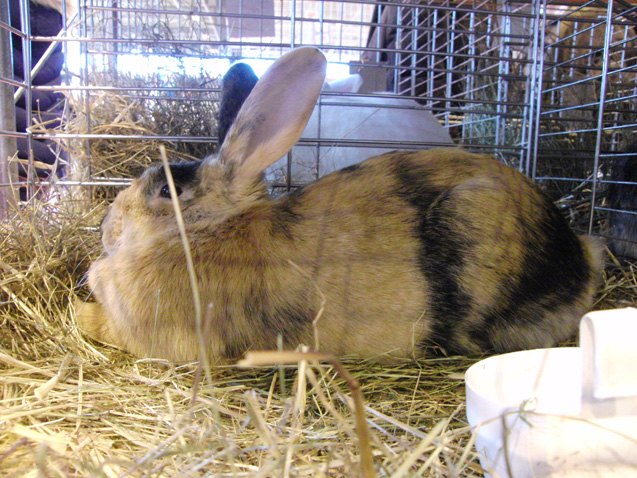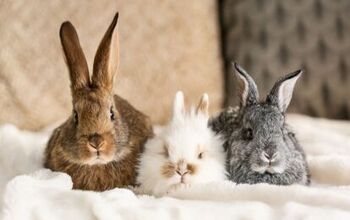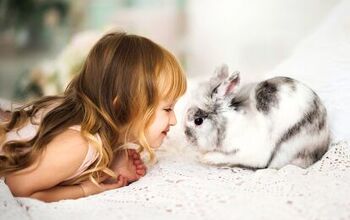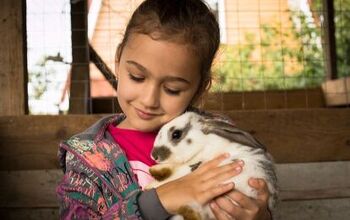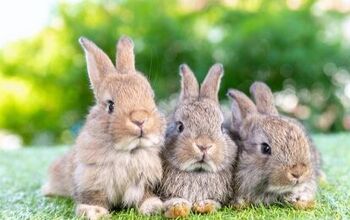Harlequin Rabbit


About Harlequin Rabbit
The Harlequin Rabbit was first exhibited in 1880s France and has been recognized by the United States in 1920s. The original name for the Harlequin rabbit was the Japanese rabbit, however that was dropped during the World Wars.
The Harlequin Rabbit breed is often called the clown of rabbits due to their unique colors and markings.
This rabbit has a commercial body type, usually weighs anywhere from 6.5 lbs to 9.5 lbs and has a rather broad head compared to other rabbits.
Harlequin rabbits have short, sort rabbit fur that doesn’t need much maintenance to keep clean. Shedding is minimal, but if you’re worried about the amount of fur that may find itself on your clothes and furniture, simply brush them with a wire bristled brush once a week or as necessary.
Indoor rabbits will usually have a cleaner coat than outdoor rabbits, so if your rabbit has some dirt on him, be sure to spot-clean it with a damp towel. Under no circumstances should you give your rabbit a bath, as this causes them great stress and may give them a heart attack which can result in death.
The Harlequin rabbit breed is often called the clown of rabbits due to their unique colors and markings. There are actually two kinds of Harlequin rabbits: the Magpie and the Japanese. Japanese Harlequin rabbits are usually orange and combined with either lilac, chocolate, black or blue. Magpie Harlequin rabbits are usually white combined with either blue, black, chocolate or lilac. Their body markings are either bands, bars or a combination of the two.
In order to qualify for the American Rabbit Breeders Association’s Standard of Perfection, Harlequin rabbits need to have 3 part frontal alteration. This means the ears must be different colors, the face must also be different colors and they must alternate with the ears. The chest and hind feet should also be two different colors.
Harlequin rabbits are outgoing creatures who love to hop around and explore every inch of their rooms.
Rabbits need an adequate enclosure to spend some of their time to eat, sleep, etc. Should you have an outdoor enclosure, it should be raised and have enough space for the rabbit to stretch their legs out comfortably. It should also have a ramp that lowers to the bottom of their fenced enclosure so they can feel some grass and ground beneath their feet. Indoor rabbits should have a wire enclosure that also allows them enough space to stretch out. Their bedding should be spot-cleaned every day so they can lay down on clean, soft bedding and it should be completely replaced every week.
A Harlequin rabbit’s diet is like any other pet rabbit in that it should consist mostly of hay – 70 percent. The rest of their diet should be a healthy mix of pellets, vegetables and fruits. Before feeding any new fruit and vegetable to your rabbit, make sure it does not cause any harm to your bunny by researching it first. If you’re unsure, the easiest thing is not to feed it to them. Some surprising foods that are actually dangerous to rabbits include onions, leeks, chives and mustard greens. Contrary to popular belief, you should not feed your rabbit most lettuces, as they contain lactucarium, which will give your rabbit diarrhea. There are plenty of other leafy greens and vegetables that you can feed your rabbit such as parsnips, watercress, Brussels sprouts and fennel.
Harlequin rabbits are active, happy-go-lucky creatures who need plenty of outdoor time in order to bond with their human family. While you’re at work, it’s best to keep them in their enclosure where they are safe from harm but while you’re home making dinner or doing other chores, make sure to let your bunny roam free around the house so they can get their much-needed exercise, plus interact with their pet parents.
The Harlequin rabbit does not have any known breed-specific health problems, however they are susceptible to other common rabbit problems, including overgrown teeth. Unlike humans, rabbit teeth continue to grow well into their adulthood – in fact, they never stop growing! Should your pet rabbit have a diet that lacks in hay, they will not be able to naturally shave their down their teeth. Their teeth could grow much more than they are supposed to and grow into their jaws and mouths and be very painful. Always monitor your rabbit’s teeth by taking a peek in their mouth every week or so to make sure they are being kept nice and short.
As with any rabbits, it is also important to keep their nails nice and short so they don’t accidentally hurt themselves or other people while they are on laps. Either take your rabbit to your local veterinarian to do this or you can do it yourself by using a pair of sharp nail clippers. If you’re doing it yourself, be aware of where your rabbit’s nail quick is and don’t cut their nails too short.
Harlequin rabbits do not have any known breed-specific health problems.
Rabbits are much harder to litter train than other animals such as cats, dogs and birds however it is possible with lots of patience, perseverance and plenty of treats. Many rabbit parents will have 5 or 6 litter scattered across their home so their pet rabbit can easily access the litter box instead of doing the deed wherever they please. Having said that, don’t be alarmed if potty training your rabbit takes a few months… it may be a lengthy process, but it’s well worth the end result.
The Harlequin rabbit is an outgoing creature who loves to hop around and explore every inch of his rooms, even if they’ve done it dozens of times before. They are truly the clowns of the rabbit world, both with their colorful bodies and personalities. They are good-natured bunnies who will appreciate the occasional pat on the head and back scratch. Although this is not a mini or small-sized rabbit, they still do well with children, so long as younger ones are supervised while they play with your harlequin. They will no doubt be enticed by their gorgeous coat and even more excited when they realize how energetic they are.
Be sure to provide your rabbit with a few bunny-safe toys. Rabbits have different personalities and can be picky with their toys. You could decide to spend a good hundred dollars on a fantastic bunny-safe toy and find out your rabbit couldn’t care less about it. Some rabbits are content with just some cardboard or a discarded piece of wood while others require elaborate toys that mentally stimulate them in order for them to be happy. As pet parents, it is our responsibility to make sure our pets are healthy and happy – you’ll just have to figure out what kind of toy your rabbit prefers!
Photo credit: Lynn Gardner/Flickr; Birdsong Farm; Eponimm/Wikimedia

More by Diana Faria




